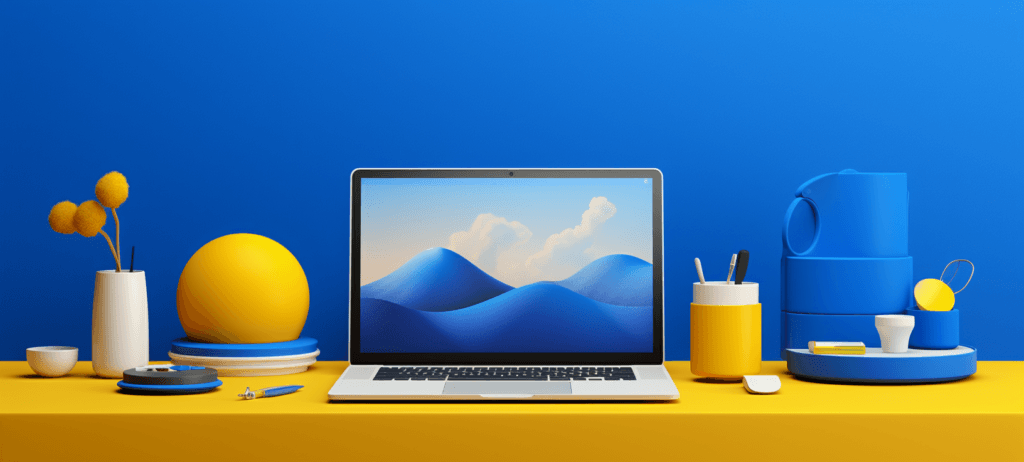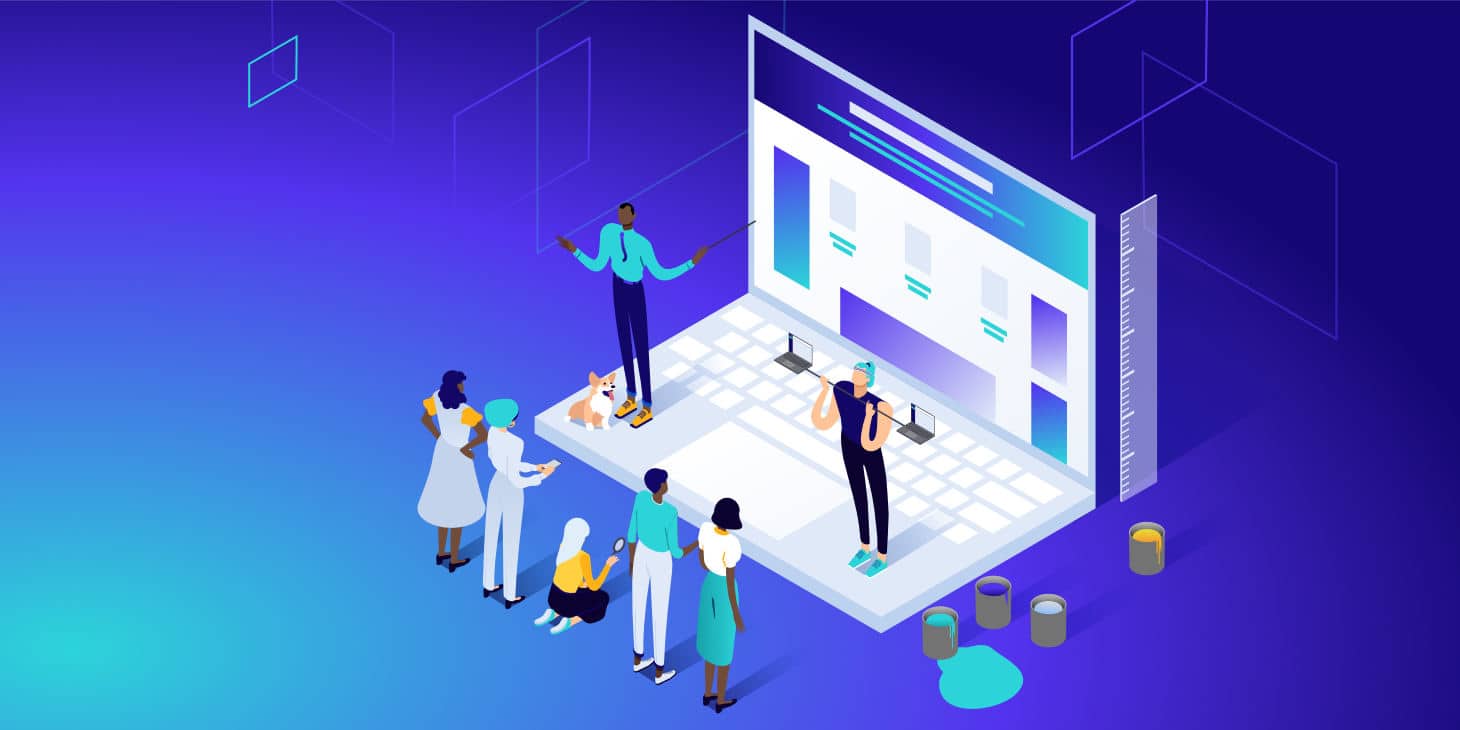Master the Art of Web Layout With These Professional Tips and Techniques
In today's electronic age, having a properly designed and visually attractive site is essential for any kind of company or specific seeking to make a mark online. Nonetheless, mastering the art of web layout needs greater than simply an eye for aesthetic appeals. It involves a deep understanding of user experience, capability, and the current patterns and strategies. So, how can you boost your internet style skills to the following degree? In this discussion, we will check out professional tips and methods that will not just improve the visual charm of your website however likewise improve its functionality and efficiency. From choosing the right color scheme to including reliable call-to-actions, these understandings will certainly aid you develop a website that not just captivates your audience but additionally drives results.
Choosing the Right Color Palette
When picking a color scheme for website design, it is very important to consider factors such as brand name identification, target audience, and general aesthetic objectives. The colors utilized in a site can substantially influence exactly how customers interact and perceive with the site. It is important to select shades that straighten with the brand name's identification and worths. For instance, a tech company might select a sleek and modern-day shade palette, while a children's brand might pick intense and lively colors.
In enhancement to brand name identity, the target audience must also be taken into factor to consider when choosing a color scheme. Understanding the choices and expectations of the target audience can help develop a interesting and visually enticing website.
Last but not least, the general aesthetic objectives of the web site must be taken into consideration when selecting a shade palette. The color scheme need to complement the overall layout and layout of the website, developing a visually appealing and cohesive experience for users. Whether the goal is to create a calm and calming environment or an energised and dynamic atmosphere, the shade combination should be meticulously picked to attain the preferred visual.

Developing Straightforward Navigating
To improve the individual experience, it is necessary to create easy-to-navigate and instinctive menus for internet sites. User-friendly navigating is important for guiding visitors with the numerous areas and pages of an internet site, allowing them to quickly locate the material they are searching for. When creating the navigation food selection, simpleness is key. Prevent littering the menu with way too many options, as this can overwhelm individuals and make it tough for them to make choices. Instead, emphasis on providing clear and succinct tags for each menu thing, utilizing familiar terms that individuals can quickly comprehend.

Along with clear labels and rational organization, it is necessary to make the navigation food selection quickly obtainable. Place it in a noticeable location, such as at the top of the page or in a set position, to ensure that customers can conveniently locate and access it from anywhere on the site. Think about making use of a responsive layout approach to ensure that the navigation food selection remains useful and easily accessible on various tools, including smart phones and tablets.
Integrating Responsive Layout Strategies
In order to maximize site capability throughout various gadgets, including receptive style strategies is vital. Receptive layout is a web design technique that allows internet sites to respond and adapt to various display dimensions and alignments. With the boosting use tablets and smart devices, it is critical for internet developers to create sites that offer an ideal viewing experience for users on all tools.
Among the vital strategies in receptive layout is making use of fluid grids. As opposed Learn More Here to developing fixed-width layouts, internet designers develop versatile grids that resize and adjust based upon the screen dimension. This ensures that the material on the web site stays readable and available, despite the gadget being used.
An additional important method is using versatile images and media. By setting the maximum width of images and videos to 100%, they will automatically scale down to fit smaller screens. This protects against photos from being reduced off or distorted on mobile devices.
In addition, receptive design includes utilizing media queries to apply different designs and designs based on the gadget's screen dimension. This allows web designers to develop a seamless experience by tailoring the presentation of web content according to the gadget being utilized.
Optimizing Site Speed and Efficiency
One essential facet of internet design is optimizing site rate and performance. A sluggish that site web site can lead to an inadequate individual experience, high bounce rates, and reduced search engine positions.
To start with, optimizing images is important for improving internet site rate. Pictures should be effectively compressed and resized to reduce their data size without compromising high quality. This can be done using picture optimization tools or plugins.
Another important aspect to take into consideration is internet site caching. Caching entails keeping fixed versions of websites so that they can be promptly gotten instead of creating them from square one each time a user checks out the site (Webwize Tomball Web Design). This substantially minimizes packing times and improves general performance
Minifying CSS and JavaScript documents is one more efficient technique. Getting rid of unnecessary whitespace, remarks, and decreasing code intricacy can greatly boost site rate.
Implementing Reliable Call-to-Actions
Creating persuasive and engaging call-to-actions is an important aspect of efficient website design. A call-to-action (CTA) is a prompt or direction that encourages individuals to take a certain action on a web site, such as purchasing, authorizing up for an e-newsletter, or getting in touch with the business. Executing efficient CTAs can considerably boost user interaction and conversion rates.
To develop engaging CTAs, it is crucial to use concise and clear language that shares the worth recommendation and benefits of taking the preferred activity. The CTA needs to be visually popular on the web page, utilizing contrasting design and colors aspects that attract the user's focus. Furthermore, utilizing action verbs and producing a sense of necessity can better boost the efficiency of the CTA.
Furthermore, it is essential to position web building companies the CTA strategically on the web page. Positioning it over the layer, where it is right away visible to individuals without requiring to scroll, can significantly boost its presence and click-through rates. It is likewise valuable to check various variations of CTAs to identify which ones resonate best with customers and drive the greatest conversion prices.
Final Thought
In verdict, understanding the art of website design needs interest to numerous components such as shade palette choice, user-friendly navigation, responsive layout methods, internet site speed optimization, and efficient call-to-actions. By executing these expert ideas and techniques, internet developers can produce aesthetically appealing and useful web sites that boost user experience and drive wanted actions.
The colors utilized in a website can considerably affect how users interact and regard with the site.In order to maximize web site performance across different tools, including receptive design techniques is vital. Receptive style is an internet layout method that allows websites to adapt and react to different screen dimensions and positionings. With the increasing usage of tablets and smartphones, it is important for web designers to develop websites that provide an optimum viewing experience for users on all tools.
